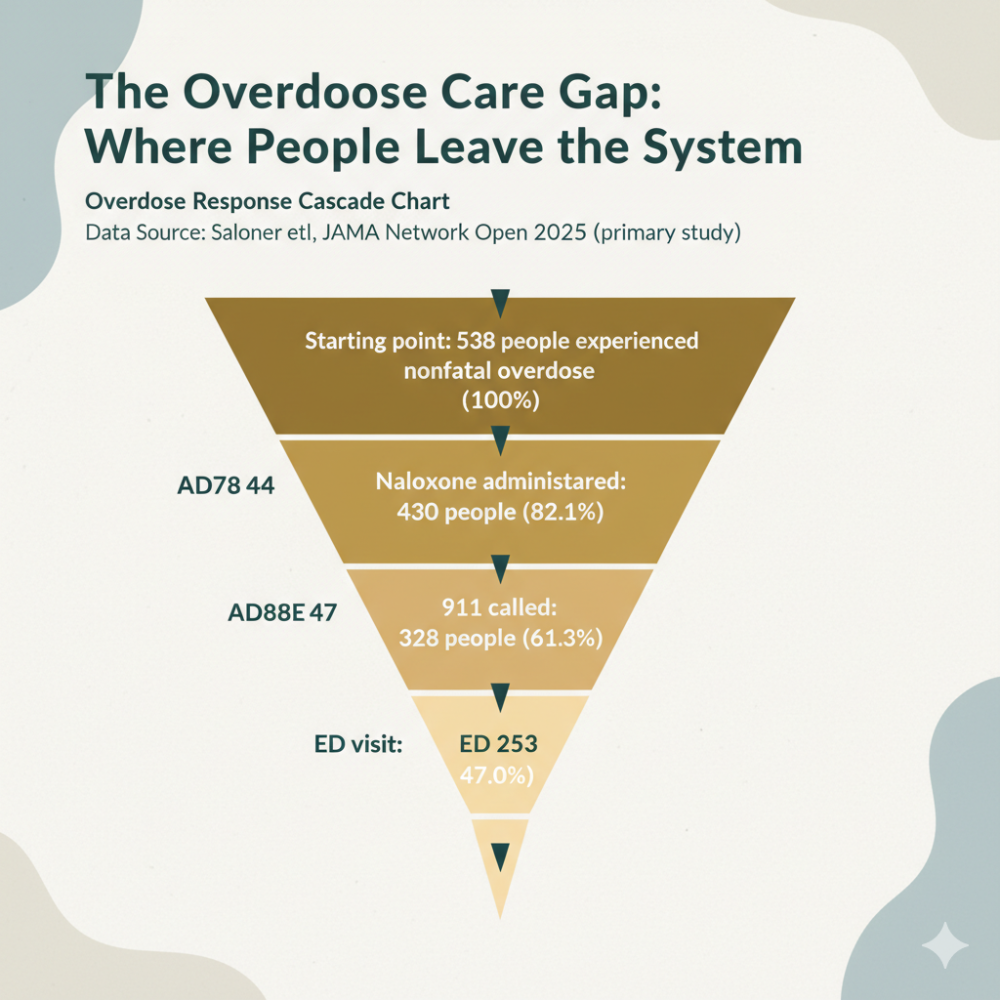Dangers of Combining Cocaine & Stimulants
Risks of Mixing Cocaine and MDMA (Ecstasy), Cocaine, Methamphetamine (Meth), Adderall, Ritalin, Concerta, MyDayis, Dexedrine, Dextroamphetamine
In the vast world of psychoactive substances, cocaine stands as one of the most potent stimulants known to humanity. Its allure, tied to its powerful euphoric effects, has led countless individuals down a path of addiction and risk. While using cocaine alone poses significant hazards, combining it with other stimulants catapults those dangers to unprecedented heights.
Through this article, we’ll embark on a journey to understand the gravitas of these combinations, unraveling the layered complexities of mixing cocaine with other stimulants and the potential threats they pose to both the body and mind.
Understanding Cocaine
Cocaine, a white powdery substance, has a long history and complex character that’s both fascinating and alarming. Its allure is primarily due to its powerful stimulant properties, which, when abused, can have severe repercussions on an individual’s health, mind, and societal interactions.
The history of cocaine traces back to ancient civilizations in South America. Indigenous people chewed coca leaves for their stimulating effects, which helped them cope with the high-altitude environments of the Andes Mountains. The active compound in these leaves, cocaine, wasn’t isolated until the mid-19th century. Once it was, it rapidly gained popularity in the medical community and even in consumer products.
How Cocaine Works in the Body
When ingested, cocaine acts as a potent stimulant by blocking the reuptake of neurotransmitters, specifically dopamine, in the brain. This leads to an accumulation of dopamine in the synapses or spaces between neurons, causing intensified feelings of pleasure and increased energy. However, this ‘high’ is fleeting, often leading users to take more of the drug in pursuit of sustained or heightened euphoria. It’s this cycle that can lead to addiction.
Forms of Cocaine and Methods of Use
Cocaine can be found in multiple forms:
- Cocaine Hydrochloride: This is the powdered form of cocaine, which is often snorted through the nose or dissolved in water and injected.
- Crack Cocaine: A rock crystal form that’s heated to produce vapors, which are then smoked. It’s called “crack” due to the crackling sound it makes when heated.
Short-term and Long-term Effects
While the immediate effects of cocaine – such as euphoria, increased alertness, and enhanced confidence – might seem appealing, they come with a slew of negative side effects. These can range from increased heart rate and blood pressure to paranoia and erratic behavior. Over time, sustained use can lead to severe health complications, including cardiovascular diseases, respiratory issues, and neurologic problems like strokes or seizures.
The Societal Impact of Cocaine
Beyond the individual, cocaine has significant societal ramifications. Its illegal trade has given rise to powerful drug cartels, leading to widespread violence and crime. Moreover, its addictive nature can lead to broken families, job losses, and other societal disruptions.
Cocaine, while historically rooted in ancient practices, has morphed into a modern-day menace for many. Understanding its nature is crucial for both prevention and treatment efforts.
What are Stimulants?
Stimulants, sometimes referred to as “uppers”, are a broad category of substances that elevate certain bodily functions, specifically those under the control of the central nervous system (CNS). By affecting chemical signals in the brain, stimulants can temporarily elevate or amplify certain physiological or psychological functions. But what exactly does this entail?
The Science Behind Stimulants
At the heart of the stimulant’s effects lies the brain. These substances increase the levels of certain neurotransmitters, primarily dopamine, norepinephrine, and serotonin, in the brain. Dopamine, for instance, is associated with pleasure, movement, and attention. By increasing its levels, stimulants create feelings of euphoria, enhanced focus, and increased energy.
Natural vs. Synthetic Stimulants
While we often think of stimulants as man-made drugs, they also exist naturally in our environment.
- Natural Stimulants: These are found in everyday items like tea, coffee, and chocolate. Caffeine, a primary component of these products, is a natural stimulant. Other examples include the nicotine in tobacco and the ephedrine in some herbal products.
- Synthetic Stimulants: These are man-made and are often more potent than their natural counterparts. They include substances like amphetamines (Adderall), methamphetamine (crystal meth), and MDMA (ecstasy). They are usually manufactured for medical purposes, but their potential for abuse has led to widespread recreational use and illegal trade.
Medical Uses of Stimulants
Stimulants have therapeutic uses as well. Doctors often prescribe them for conditions like attention-deficit hyperactivity disorder (ADHD), narcolepsy, and, occasionally, treatment-resistant depression. They can help increase attention span, control behavior, and even improve mood. However, it’s essential to use them under medical supervision to avoid potential side effects or dependency.
Recreational Use and Abuse
The feeling of euphoria, increased confidence, and heightened alertness can make stimulants highly attractive for recreational use. However, this can lead to misuse, addiction, and even overdose. It’s this dark side of stimulants, especially when combined with other substances like cocaine, that poses significant risks to users.
By understanding the vast world of stimulants, we can better grasp the gravity of combining them with other potent substances. Whether derived naturally or created in a lab, these substances have powerful effects on the human body and mind. Respect for their potency and knowledge about their effects is the key to safe usage.
The Dangers of Mixing Cocaine and Stimulants
When one thinks of combining substances, the idea of “mixing” might bring to mind harmless cocktail recipes. However, in the world of drugs, such combinations can be far from harmless. The combination of cocaine with other stimulants creates a concoction that’s not just additive in its effects but can exponentially increase the associated risks.
Why Do People Mix Cocaine with Other Stimulants?
The answer often lies in the pursuit of an intensified or prolonged ‘high’. By mixing cocaine with other stimulants, users hope to magnify the feelings of euphoria, energy, and alertness. This can be due to a built tolerance to one drug or the desire for a novel experience.
Pharmacological Effects of the Combination
At a biological level, the combination of cocaine with other stimulants can cause an overwhelming surge of neurotransmitters in the brain, particularly dopamine. This can overstimulate the central nervous system, leading to:
- Hyperactivity: An extreme increase in energy that can manifest as restlessness or uncontrollable movements.
- Cardiovascular Issues: A dangerous increase in heart rate, elevated blood pressure, and potential for arrhythmias or heart attacks.
- Hyperthermia: Elevated body temperature, which can be life-threatening in extreme cases.
- Neurological Concerns: Increased risk of seizures, tremors, and even potential for a stroke.
Risks Beyond the Physical
The combination doesn’t only affect the body but has profound implications for the mind as well.
- Increased Addiction Potential: The intensified effects can lead to a stronger psychological dependence on the drugs.
- Mental Health Concerns: Heightened paranoia, hallucinations, and anxiety are common. The aftermath can also lead to severe bouts of depression.
The Toll on Interpersonal Relationships and Society
Users often become more unpredictable, leading to strained relationships, neglect of responsibilities, and potential job losses. The illegal nature of these substances and the desperate actions to acquire them can also lead to legal ramifications and contribute to the larger issue of drug-related crimes.
Risk of Overdose
Perhaps the most alarming concern is the increased risk of overdose. Because the body is overwhelmed by multiple substances simultaneously, it becomes challenging to predict its threshold. This unpredictability can, and unfortunately often does, lead to fatal overdoses.
Combining cocaine with other stimulants isn’t just playing with fire; it’s dousing oneself in gasoline and then striking a match. The repercussions are vast, affecting not just the individual user but also rippling out to impact their loved ones and society at large. Awareness and education on this lethal mix are essential to curb its devastating effects.
Cocaine’s Interactions with Specific Stimulants
It’s crucial to understand the distinct and cumulative effects of combining cocaine with other stimulants. Here’s a breakdown of some of the potential risks associated with each combination.
Risks of Mixing Cocaine and MDMA (Ecstasy)
Mixing cocaine with MDMA can be particularly dangerous because both drugs increase serotonin and dopamine levels. This combination can lead to:
- Serotonin Syndrome: A potentially life-threatening condition characterized by high body temperature, agitation, muscle rigidity, and rapid heartbeat.
- Cardiovascular Issues: Both drugs elevate heart rate and blood pressure, increasing the risk of heart attacks and strokes.
- Intensified Comedown: The “crash” after the drugs wear off can be severe, leading to profound depression and lethargy.
Risks of Mixing Cocaine and Methamphetamine (Meth)
When meth is combined with cocaine, the dangers skyrocket:
- Heightened Neurotoxicity: Both drugs are neurotoxic on their own, and combined, they can severely damage brain cells.
- Severe Cardiovascular Strain: Increased risk of heart attacks, arrhythmias, and strokes.
- Hyperactivity & Agitation: Users can become extremely restless, which can lead to aggressive behaviors.
Risks of Mixing Cocaine and Adderall
Adderall and cocaine together place immense pressure on the heart:
- Intensified Stimulant Effects: Both being stimulants, their combined use can lead to extreme nervousness, palpitations, and even psychosis.
- Heightened Addiction Potential: Combining the two can increase dependency on both substances.
Risks of Mixing Cocaine and Ritalin, Concerta, MyDayis, Dexedrine, Dextroamphetamine
All of these are prescription medications primarily used to treat ADHD. Their combination with cocaine poses serious threats:
- Overstimulation: Combining these medications with cocaine can lead to extreme agitation, confusion, and paranoia.
- Cardiac Risks: There’s a compounded risk of heart-related issues, including arrhythmias and heart attacks.
- Increased Neurological Risks: Potential for seizures and other neurological complications.
Remember, the interactions of cocaine with any of these stimulants can be unpredictable and significantly amplify the inherent risks of each substance. It’s crucial to be informed and aware of the potential dangers, as the combination of these substances can be, in many cases, life-threatening.
Ways to Seek Help
Battling substance addiction or misuse isn’t a solitary journey, and thankfully, there’s an array of resources and support systems available. Recognizing the need for help is the first step, and then taking action solidifies the road to recovery.
Reach Out to Professionals
- Doctors and Therapists: Primary care physicians can be the initial point of contact. They can provide medical evaluations and refer patients to specialists or rehabilitation centers.
- Addiction Specialists: These are professionals trained to handle substance abuse and its associated challenges. They can be instrumental in creating a tailored treatment plan.
- Helplines: Many countries offer helplines dedicated to substance abuse. These are often toll-free, anonymous, and available 24/7. Examples include the National Helpline for Substance Abuse and Mental Health Services in the U.S.
Rehabilitation Centers
Rehabilitation or “rehab” centers offer structured treatment programs to help individuals stop drug use and build a life in sobriety. Programs can vary in length and may be residential (inpatient) or outpatient.
Family and Friends
Never underestimate the healing power of a strong support system. Loved ones can provide emotional support, ensure that treatment plans are followed, and help reintegrate the individual into daily life after treatment.
Stay Informed
Educate oneself about the substances in question. Understanding the dangers and long-term implications can act as a deterrent and strengthen the resolve to remain sober.
In the face of addiction, remember that help is always available. Taking that brave step towards recovery not only changes the trajectory of one’s life but also has a profound impact on the community at large. The path might be challenging, but with determination and support, a substance-free life is attainable.
Help is Available
Navigating the challenges of addiction can be a daunting, uphill battle. But it’s crucial to remember that you’re not alone. The journey towards recovery often starts with the right guidance and the first step towards detoxification. Gallus Medical Detox Centers stand at the forefront of this initial phase, offering medically supervised detox solutions for individuals struggling with alcohol, illicit drugs, and prescription medication addiction.
Their comprehensive approach ensures not just physical detoxification but also caters to the emotional and psychological aspects of addiction. With a team of experts dedicated to your well-being, Gallus provides a safe, supportive environment where healing and recovery become tangible realities.
If you or a loved one are trapped in the grip of addiction, take a moment to reflect on the invaluable gift of life and health. Don’t hesitate. Reach out to Gallus Medical Detox Centers. It’s more than just a detox; it’s your beacon toward a brighter, substance-free future.
FAQs
Why is combining cocaine with other stimulants more dangerous than using them separately?
When two stimulants are combined, their effects often don’t simply add up; they multiply. This can lead to heightened cardiovascular risks, overstimulation of the central nervous system, and increased potential for overdose. Combining substances can also lead to unpredictable reactions, making it a potentially deadly gamble.
How can I tell if someone is using cocaine or another stimulant?
Common signs include increased energy, dilated pupils, rapid speech, decreased appetite, and heightened confidence. Over time, symptoms may evolve to include paranoia, restlessness, and erratic behaviors.
What are the most common stimulants mixed with cocaine?
Caffeine, amphetamines, and methamphetamines are commonly mixed with cocaine.
Can one-time use of cocaine and stimulants lead to severe health issues?
Yes, even a single instance can lead to critical health problems, including heart attacks.
How can I help someone who’s addicted?
Seek professional help, encourage rehab, and provide emotional support throughout their recovery journey.
Are there safe alternatives to stimulants for energy?
Natural methods like a balanced diet, regular exercise, and adequate sleep can boost energy without harmful side effects.
Why do people combine cocaine with other stimulants?
To enhance or prolong the euphoric effects. However, this also magnifies the associated risks.
References
- Cocaine DrugFacts | National Institute on Drug Abuse. (2022, December 19). National Institute on Drug Abuse. https://nida.nih.gov/publications/drugfacts/cocaine
- The history of cocaine in medicine and its importance to the discovery of the different forms of anaesthesia. (2007). PubMed. https://pubmed.ncbi.nlm.nih.gov/17687926/
- What are some ways that cocaine changes the brain? | National Institute on Drug Abuse. (2020, May 28). National Institute on Drug Abuse. https://nida.nih.gov/publications/research-reports/cocaine/what-are-some-ways-cocaine-changes-brain
- Crack cocaine and cocaine hydrochloride. Are the differences myth or reality? (1996, November 20). PubMed. https://pubmed.ncbi.nlm.nih.gov/8918856/
- What are the short-term effects of cocaine use? | National Institute on Drug Abuse. (2021, June 13). National Institute on Drug Abuse. https://nida.nih.gov/publications/research-reports/cocaine/what-are-short-term-effects-cocaine-use
- (U) Impact of Drugs on Society – National Drug Threat Assessment 2010 (UNCLASSIFIED). (n.d.). https://www.justice.gov/archive/ndic/pubs38/38661/drugImpact.htm
- Stimulants – alcohol and drug foundation. (n.d.). https://adf.org.au/drug-facts/stimulants/
- Prescription stimulants DrugFacts | National Institute on Drug Abuse. (2023, January 9). National Institute on Drug Abuse. https://nida.nih.gov/publications/drugfacts/prescription-stimulants
- Stimulant Guide | Feature topics | Drug overdose. (n.d.). https://www.cdc.gov/drugoverdose/featured-topics/stimulant-guide.html
- Banks, M. L., Czoty, P. W., Gage, H. D., Bounds, M. C., Garg, P., Garg, S., & Nader, M. A. (2007). Effects of cocaine and MDMA Self-Administration on serotonin transporter availability in monkeys. Neuropsychopharmacology, 33(2), 219–225. https://doi.org/10.1038/sj.npp.1301420
- Yang, X., Wang, Y., Li, Q., Zhong, Y., Chen, L., Du, Y., He, J., Liao, L., Xiong, K., Yi, C., & Yan, J. (2018). The main molecular mechanisms underlying methamphetamine- induced neurotoxicity and implications for pharmacological treatment. Frontiers in Molecular Neuroscience, 11. https://doi.org/10.3389/fnmol.2018.00186
- SAMHSA’s national helpline. (n.d.). SAMHSA. https://www.samhsa.gov/find-help/national-helpline


 Steve B
Steve B 
